O Nobilissima Viriditas
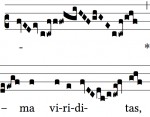
This blog will track the progress of a new work for orchestra, “Nobilissima Viriditas,” which will be premiered by the Luther College Symphony Orchestra next fall. Check back for weekly (or nearly weekly) updates.
First Hearing
The first time I hear a new work of mine in rehearsal is both exciting and frightening. I’m never worried that the musicians who are playing or singing my work aren’t up to the task, I’m more frightened that I’ve made serious miscalculations and will need to scrap the whole project and start from scratch. Fortunately, the excitement of the moment often carries me through those moments of doubt. I had the great pleasure of hearing the Luther College Symphony play through O Nobilissima yesterday, and I’m happy to say... Read The Rest →
“Engraving”

We still call this final step of the process “engraving,” though of course, there’s no movable type here or anything that makes us think of printing presses (or ink and quills, for that matter). Some composers prepare sketches and drafts for copyists who make the final versions of the printed music. I’ve never used a copyist, and as I’ve become more and more interested in the visual look of my music, it’s hard to imagine handing that process over to someone else. For an orchestral piece, there are really two... Read The Rest →
“…and burn like a flame of the sun”

For the final section of “O Nobilissima,” I am experimenting with an idea that is at once very old and somewhat new. In the Renaissance era in particular, composers were drawn to compositional techniques that lead to shifting perceptions of time. In a cantus firmus mass movement, for example, a section of chant will often appear in the tenor voice, moving very slowly, while the voices above and below move more quickly. Even more systematic is the mensuration canon, where multiple versions of the same tune are presented simultaneously and... Read The Rest →
“You blush like the dawn”
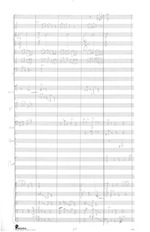
At Good Shepherd church in Decorah, where I am the organist, we have been treated to some sermons by the remarkable Richard Simon Hanson. Last week, he told us that for the ancient Hebrews, the past is in front of us, while the future is behind. It’s the opposite from how we tend to think of these concepts today, as in “look ahead to the future” and “don’t look back to the past.” But there’s a nice and beautiful logic in flipping those around–we can see the past, that’s what’s... Read The Rest →
“You are enclosed in the embrace of divine mysteries”
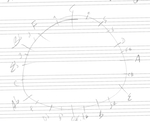
It’s been over two months since I last updated this blog, but that’s not because I haven’t been busy! Personally, it’s been a time of transition, with the end of the spring semester at Luther, my wife’s pregnancy with our second child, and our decision to move to a new house in Decorah. Just a few days after we settled into our new house, I joined three colleagues in Duino, Italy, for the International Music Festival of the Adriatic, which I blogged about here. Now that summer is finally here,... Read The Rest →
“No earthly excellence can comprehend”
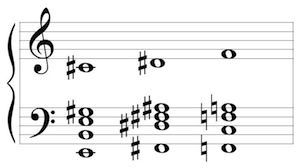
The last few weeks have been less focused on this project, with much of my time spent preparing for a premiere of a new oboe concerto, Une Cité Moderne. A nice review on an Iowa Public Radio blog is here. Prior to this performance, I worked on the fourth section of Nobilissima Viriditas, based on the text “that no earthly excellence can comprehend.” The previous section ended on a sustained chord in the string section, suggesting an E Lydian modality: From here, I knew that I wanted to land in... Read The Rest →
“Shining in dazzling serenity in a sphere”
The third line in Hildegard’s poem contains one of the key images of her visionary theology—the “dazzling sphere.” From an early age, Hildegard experienced ecstatic visions of beauty that developed and changed over her lifetime. An early vision, apparently, was one where she saw luminescent spheres gently floating around her. For this section of the composition, I have taken melodic figures directly from the chant and incorporated them into the music you’ll hear from the woodwind section. Woodwinds are often used by composers to evoke the natural world, as they... Read The Rest →
Organ Improvisation
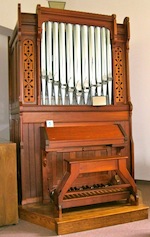
This week I played an improvised fantasy on Nobilissima Viriditas on the Hook & Hastings organ at Good Shepherd church in Decorah, where I am organist and interim choir director. As with the orchestral composition, I divided the improvisation into seven sections, each with a length proportionate to the overall structure of the poem. All told, the performance lasted about 22 minutes, or roughly twice the projected length of the composition. The only section that was quoted directly from my sketches was section 5, “You are enclosed in the embrace... Read The Rest →
“rooted in the sun”
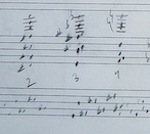
The second line of Hildegard’s poem, quae radicas in sole, translates as “rooted in the sun.” Following the noble opening phrase (“O most noble greening power”), I want this section of the piece to contain gestures that sonically depict a sense of rooted-ness and growth (I keep thinking of Isaiah 11, “A shoot will spring forth from the stump of Jesse”). I also want to “root” the music in Hildegard’s sonic world, so I will incorporate phrases from her own musical setting of the poem into my own composition. Above... Read The Rest →
